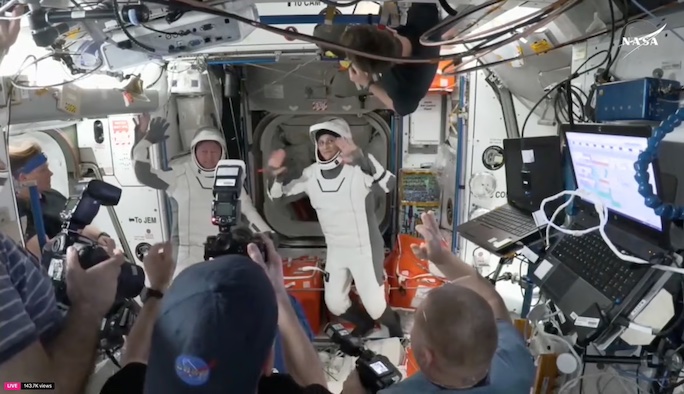SCIENCE

NASA ASTRONAUTS BEGIN JOURNEY BACK TO EARTH AFTER NINE MONTHS STRANDED ON ISS
NASA astronauts Suni Williams and Butch Wilmore are on their way back to Earth after spending nine months aboard the ISS.
After spending over nine months aboard the International Space Station (ISS), NASA astronauts Suni Williams and Butch Wilmore are finally making their way back to Earth on Tuesday.
Their return journey is aboard a SpaceX Crew Dragon capsule, following an extended stay due to technical issues with Boeing’s Starliner spacecraft.
Williams and Wilmore originally launched in June 2024 for what was supposed to be an eight-day test mission of Boeing’s Starliner capsule. However, unexpected technical failures led NASA to send the Starliner back to Earth without passengers, forcing the astronauts to remain on the ISS until an alternative ride became available. That opportunity came when two seats opened up on a SpaceX Dragon capsule.
After months of integrating with the ISS crew, Williams and Wilmore are now returning alongside NASA astronaut Nick Hague and Russian cosmonaut Aleksandr Gorbunov. Hague and Gorbunov arrived at the ISS in September 2024 as part of SpaceX’s Crew-9 mission, which initially launched with only two astronauts instead of four, making room for Williams and Wilmore on the return trip.
For Gorbunov, this marks his first spaceflight, while Hague previously spent 203 days on the ISS in 2019.
The journey back to Earth is expected to take approximately 17 hours, culminating in a splashdown just before 22:00 GMT. The return follows a carefully planned timeline:
- 05:05 GMT – The SpaceX Dragon capsule undocks from the ISS.
21:11 GMT – The capsule initiates its deorbit burn, firing its rockets to slow down and begin re-entry into Earth's atmosphere.
21:57 GMT – Splashdown in the ocean.
Re-entry will be an intense phase of the journey. The capsule will endure scorching temperatures of up to 1,600°C, with its heat shield playing a crucial role in protecting the astronauts from the searing heat. As the spacecraft hurtles through the atmosphere, it will decelerate rapidly, subjecting the crew to forces nearly four times Earth's gravity.
As the capsule nears the surface, four large parachutes will deploy, dramatically reducing its speed for a controlled ocean landing. While the final descent may be jarring, the parachutes ensure a safe and relatively smooth splashdown.
Astronauts typically spend around six months aboard the ISS, but Williams and Wilmore have now surpassed nine months in space. Prolonged exposure to microgravity can have significant effects on the human body, making their extended stay a unique physiological challenge.
Despite maintaining daily exercise routines, astronauts still experience bone density loss and muscle atrophy due to prolonged weightlessness. The lack of gravity also disrupts blood circulation, causing fluid shifts that can affect vision. Additionally, exposure to higher levels of radiation in space presents potential long-term health risks.
NASA carefully monitors astronauts both during their missions and after their return to assess these physical effects. While most changes are reversible, re-adjusting to Earth's gravity is a gradual process.
Since Williams and Wilmore originally expected to return after just over a week, they packed lightly. Williams brought a card game—initially unsure if it would work in zero gravity, though the crew managed to play. Wilmore carried a gold ring adorned with sentimental naval aviator wings, symbolizing his career. Meanwhile, Hague brought sheet music, adding a personal and musical element to his time on the station.
Despite the unexpected delay, astronauts aboard the ISS continued to receive regular shipments of food, water, clothing, and oxygen, ensuring they had everything they needed.
For the returning crew, the journey back to Earth will be both exhilarating and a relief. British astronaut Helen Sharman, who returned from space aboard a Soyuz capsule in 1991, described reentry as an intense yet thrilling experience.
“They’re seasoned astronauts, but they’ll still feel incredible to be back on Earth. The first thing they’ll notice is the fresh air,” she said.
After months of floating in microgravity, simple earthly sensations—standing upright, feeling the wind, and walking on solid ground—will be a welcome change.
"This represents a significant development in our ongoing coverage of current events."— Editorial Board









